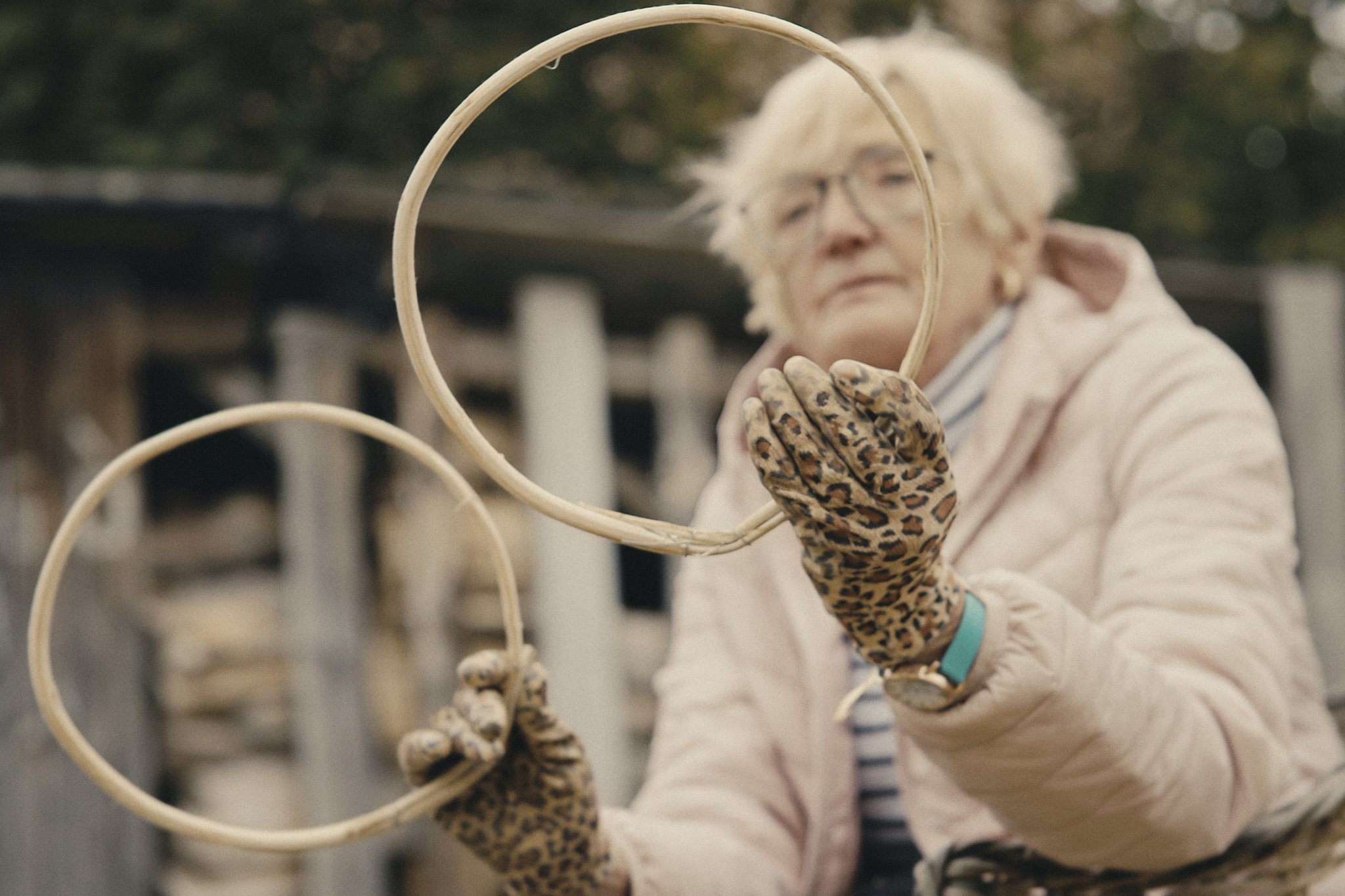
TRACE:
Traditional Arts and Crafts of Europe
POLAND
Folk Painting on Glass
Kashubian painting on glass is associated with the decoration of woodcuts with images of saints with floral motifs. It was very popular and paintings were found in many homes. The designs were often inspired by Kashubian embroidery or paintings on folk furniture. At the end of the 19th century they were superseded by the more popular and modern oleo-prints, but in the second half of the 20th century it was decided to revive the tradition of glass painting. Today, it is a prominent field in Kashubian folk art.
Alicja Serkowska | glass painter
Folk artist from Kartuzy specialising in embroidery, lace-making and painting. She has been doing Kashubian embroidery since she was young. Her mother taught her the technique, and she embroidered at the school in Żukowo. Since 1992, she has also been painting on glass, learning under Dr Aleksander Błachowski from Toruń. She holds a degree in graphic design from the Academy of Fine Arts. At the Museum of the History of Polish Jews Ethnography Branch, she has been running workshops on Kashubian glass painting for many years, teaching the participants both the secrets of the traditional technique of painting on glass and the function of the paintings in the interiors of old chambers (decorative and religious, among others). She also teaches classes at the Kashubian Folk University. Awarded numerous medals for services, winner of competitions. Member of the Association of Folk Artists. Participates in many open-air events and exhibitions of folk art in Poland and abroad.
Video and photo: Jan Rusek
Project coordination: Anna Ratajczak-Krajka
Production: Ethnography Collection of the National Museum in Gdańsk
Co-founded by the European Union








Traditional Pottery
Pottery and the making of ceramic pots has been known since the Neolithic period. The main material is clay, which is prepared in a special way to make it homogeneous and free of impurities. The pottery is rolled on a potter's wheel or worked by hand. After drying, the clay objects are fired in a special kiln. The forms of the pots were not complicated and the painted decorations were limited to simple floral or geometric motifs. Ceramics has a special place in the folk culture of Kashubia, an important region of Gdansk Pomerania. Clay pottery has been made here for a long time - mugs, double mugs, plates or jugs. An interesting example of Kashubian ceramics are dënice, or special vessels for grinding snuff. The vessels were decorated with characteristic motifs: a lilac bouquet, a tulip, a Kashubian star or a fish scale. The decoration of the vessels was usually done by the women of the family or the potters themselves.
Monika Wieczorkowska | pottery maker
Handicraft artist from Gdańsk, she has been making ceramics since 1997. For several years she worked as an instructor of occupational therapy in the ceramic studio of the “Sprawni Inaczej” Foundation. At the same time, she opened her own studio to provide classes for amateur adults, children and young people. As a stage designer, she has worked for years with the Dance and Music Theatre “Kino Variatino”, creating visual and instrumental settings for the theatre. She represented Polish pottery within the SHARE project, which aims to build cooperation between craftsmen from different European countries. The fruit of this project was a workshop in Cyprus, where she became acquainted with the traditional pottery of that region. For years it has had a stand at the Summer Ethnographic Fair in the NMG Ethnography Department.
Video and photo: Jan Rusek
Project coordination: Anna Ratajczak-Krajka
Production: Ethnography Collection of the National Museum in Gdańsk
Co-founded by the European Union










Folk Wooden Sculpture
Woodcarving is one of the oldest fields of folk art. Over the centuries it has been inspired by existing styles in art, but due to the non-professional nature of its creators, it shares many common features. The figures are compact, static and have unnatural proportions. They are often very colourful, but the colour palette is limited. Folk sculpture in Poland has traditionally been strongly associated with religiosity and rituals. Many old folk sculptures are so-called świątki, that is, depictions of sacred figures and religious scenes. These sculptures were mostly placed in roadside shrines or as roadside crosses. The sculptors created also figural beehives, which had a magical function in addition to being utilitarian. They were also keen to make toys, such as rocking horses and windmills. Contemporary folk artists also like to carve animal figures and scenes from everyday life.
Stanisław Śliwiński | folk sculptor
Sculptor, folk artist. He was born in Gdańsk, and has been working in sculpture for 50 years. He is president of the Gdańsk Branch of the Association of Folk Artists. He makes full sculptures and bas-reliefs, mainly in linden wood, on sacred themes (Sorrowful Jesus, saints such as: Francis, Veronica, Mother of God, Christmas Cribs) and secular themes (figures of fishermen, farmers, old men, musicians). He has developed his own original form of artistic expression, maintained in the convention of folk sculpture. He is also involved in imparting knowledge about sculpture and folk art by conducting classes and workshops in schools and museums. He is the author of recognized and valued works, participant in competitions, individual and collective exhibitions in Poland and abroad. He has been working with the NMG Ethnography Department for years, sculpting live, selling his artworks and leading workshops at the Summer Ethnographic Fair.
Video and photo: Jan Rusek
Project coordination: Anna Ratajczak-Krajka
Production: Ethnography Collection of the National Museum in Gdańsk
Co-founded by the European Union

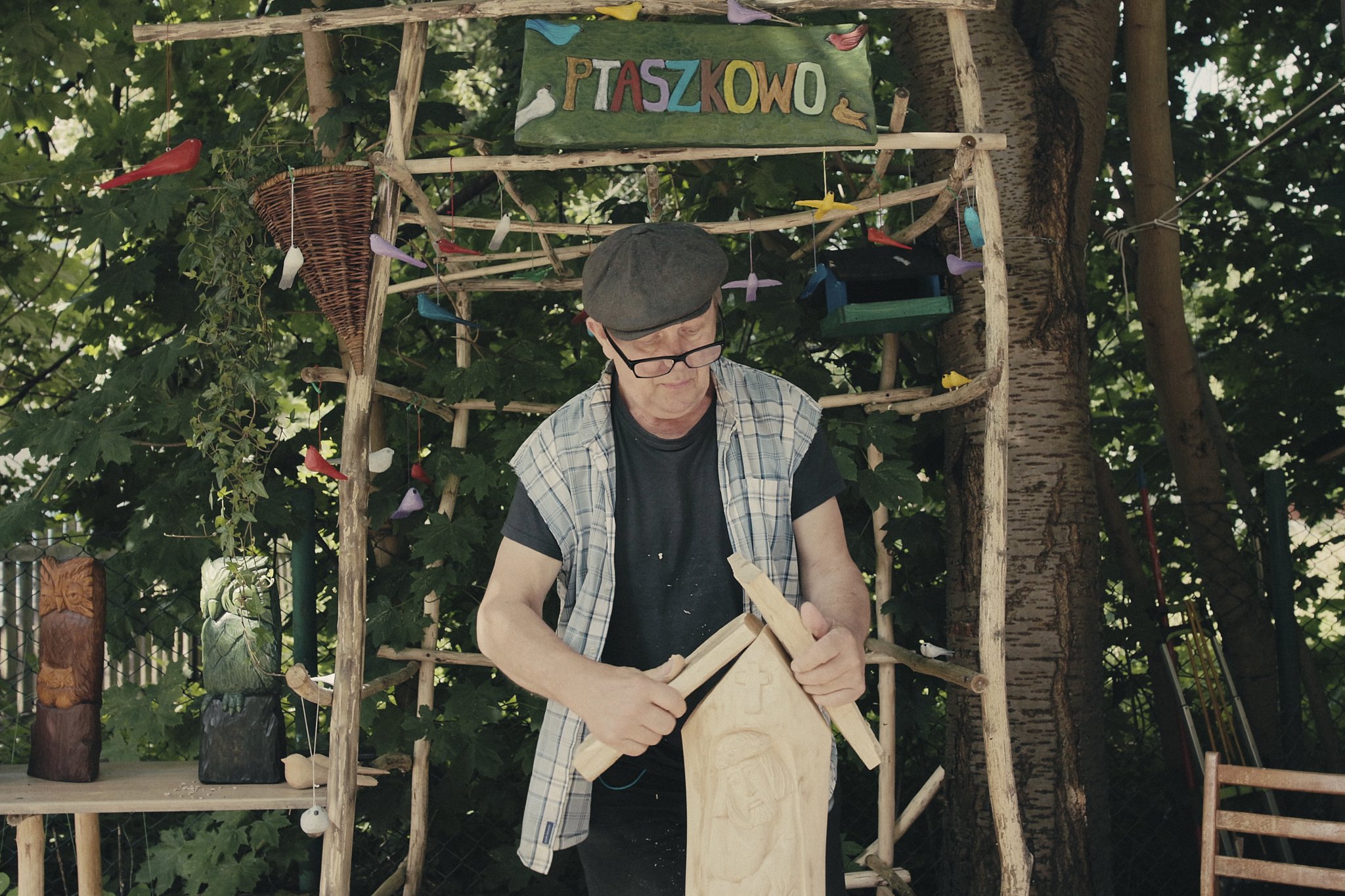




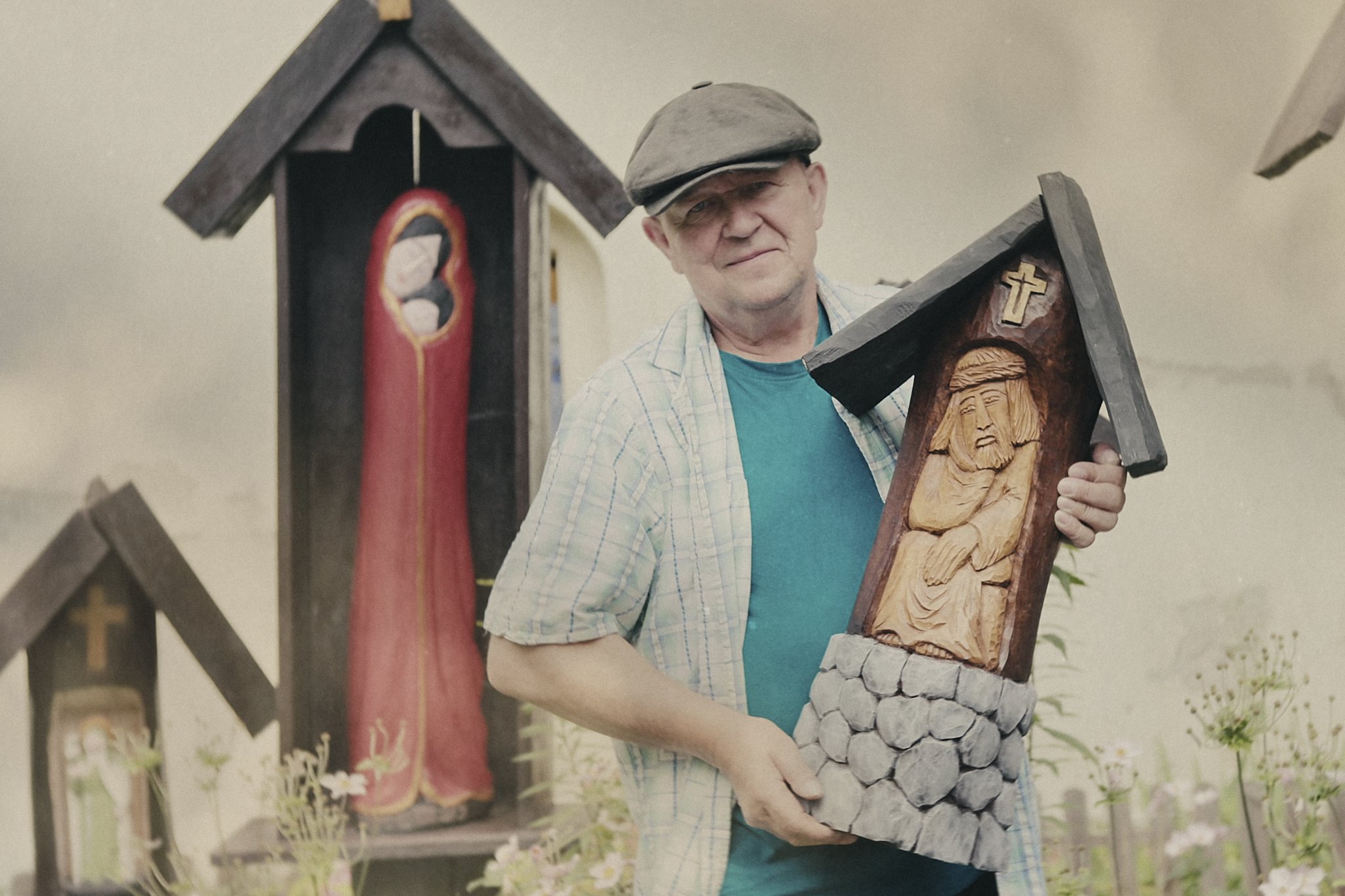



Kashubian Embroidery
Kashubian embroidery was created in the early 20th century by Teodora Gulgowska in Wdzydze Kiszewskie. She created a pattern book of embroideries inspired by the historic headpieces of wealthy Kashubian women, ornaments on folk furniture or antique liturgical vestments. She inspired women to take up embroidery as a handicraft and income-earning opportunity. Today there are several schools of Kashubian embroidery, differing in the motifs and colours used for embroidery. Popular Kashubian motifs include pomegranate fruit, roses, rosettes, palmettes or peacock eyes. The most popular is the seven-colour palette - shades of blue, green, red, yellow and black. Napkins, tablecloths, cushions, bed linen or regional costumes are decorated with embroidery. The skill of embroidering is passed down from generation to generation.
Elżbieta Żuławska | folk embroiderer
A folk artist from Gdańsk, one of the well-known and talented Kashubian embroiderers. She began taking an interest in embroidery as a child. At the age of 20, she attended a Kashubian embroidery course organised by the Kashubian-Pomeranian Association in Gdańsk. At that time she became more familiar with the techniques, compositions and design of Kashubian and Kociewie embroidery. Since then, she has participated in folk art competitions, receiving high awards, and has presented her embroideries at post-competition exhibitions. Her handicraft is characterised by perfect technical execution and very good compositions, which show great creative imagination, as well as great aesthetic qualities and a specific, characteristic style. She runs workshops and handicraft shows for children, young people and adults. A Member of the Association of Folk Artists. Awarded medals for the dissemination of traditions and folk art. For years it has had a stand at the Summer Ethnographic Fair in the NMG Ethnography Department.
Video and photo: Jan Rusek
Project coordination: Anna Ratajczak-Krajka
Production: Ethnography Collection of the National Museum in Gdańsk
Co-founded by the European Union

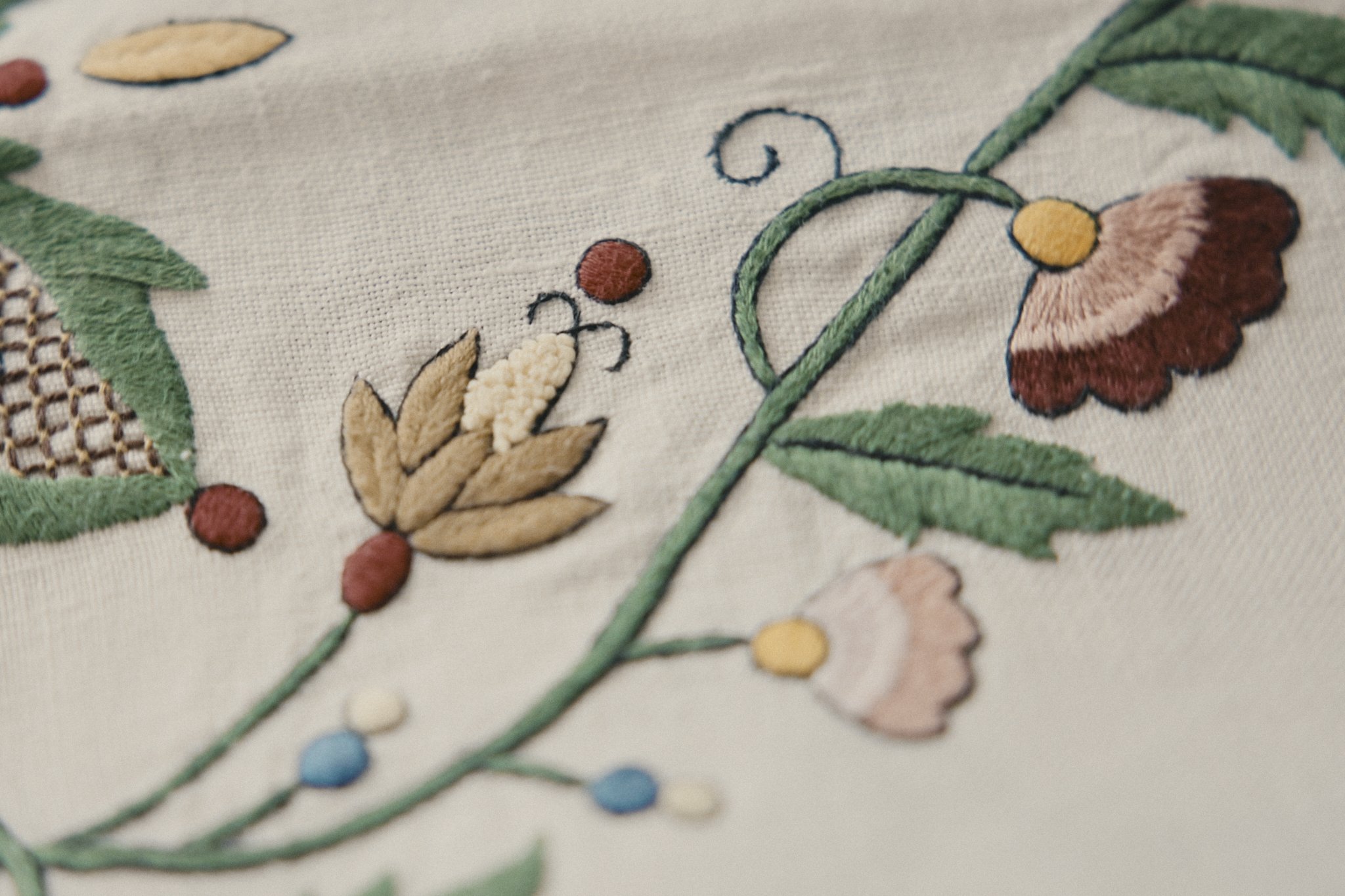








Traditional Horn Processing
Horn making is a traditional folk craft, very popular in the Kashubian region. Horns of farm animals such as cows, oxen, rams or goats were mainly used. Sometimes also the horn of wild animals such as roe deer or deer. The horns are worked mechanically with tools, and their shape is modified by softening them by boiling them in water or heating them over a fire. Various presses and moulds are used to give them a particular shape. Traditionally, horn was used to make buttons for clothes, hair clasps, key hangers, shoehorns, combs, handles for walking sticks or various boxes, but also shepherd's trumpets. The most popular horn items in Kashubia are snuff boxes.
Henryk Lessnau | horn snuff boxes maker
He makes horn snuff boxes in a wide variety of shapes, most often the traditional różki (cone - made from the upper part of the horn with a curved spout) and tabaczéry/dózy (snuff boxes - in the shape of an elongated, trapezoidal bowl made from the lower part of the horn), as well as snuff boxes in the shape of a skòrznia (the shape of a shoe with an upper). One of the most attractive are the cones, which in profile resemble a bird's head, which is often intricately carved. Always looking for new forms, he makes cones with the heads of other animals: dogs, hares, penguins, horses, seagulls and fish - as he emphasises - the natural shape of the horn ‘suggests’ what form can be made. In addition to snuff boxes, he also makes horn flower vases, hunting signals, small boxes for trinkets, jewellery, miniature butter dishes and bottles, as well as anthropomorphic forms. When decorating snuff boxes, he sometimes uses amber raw material or metal, brass or silver fittings, stoppers and badges, usually with a griffin motif, the initials of the craftsman.
Video and photo: Jan Rusek
Project coordination: Anna Ratajczak-Krajka
Production: Ethnography Collection of the National Museum in Gdańsk
Co-founded by the European Union







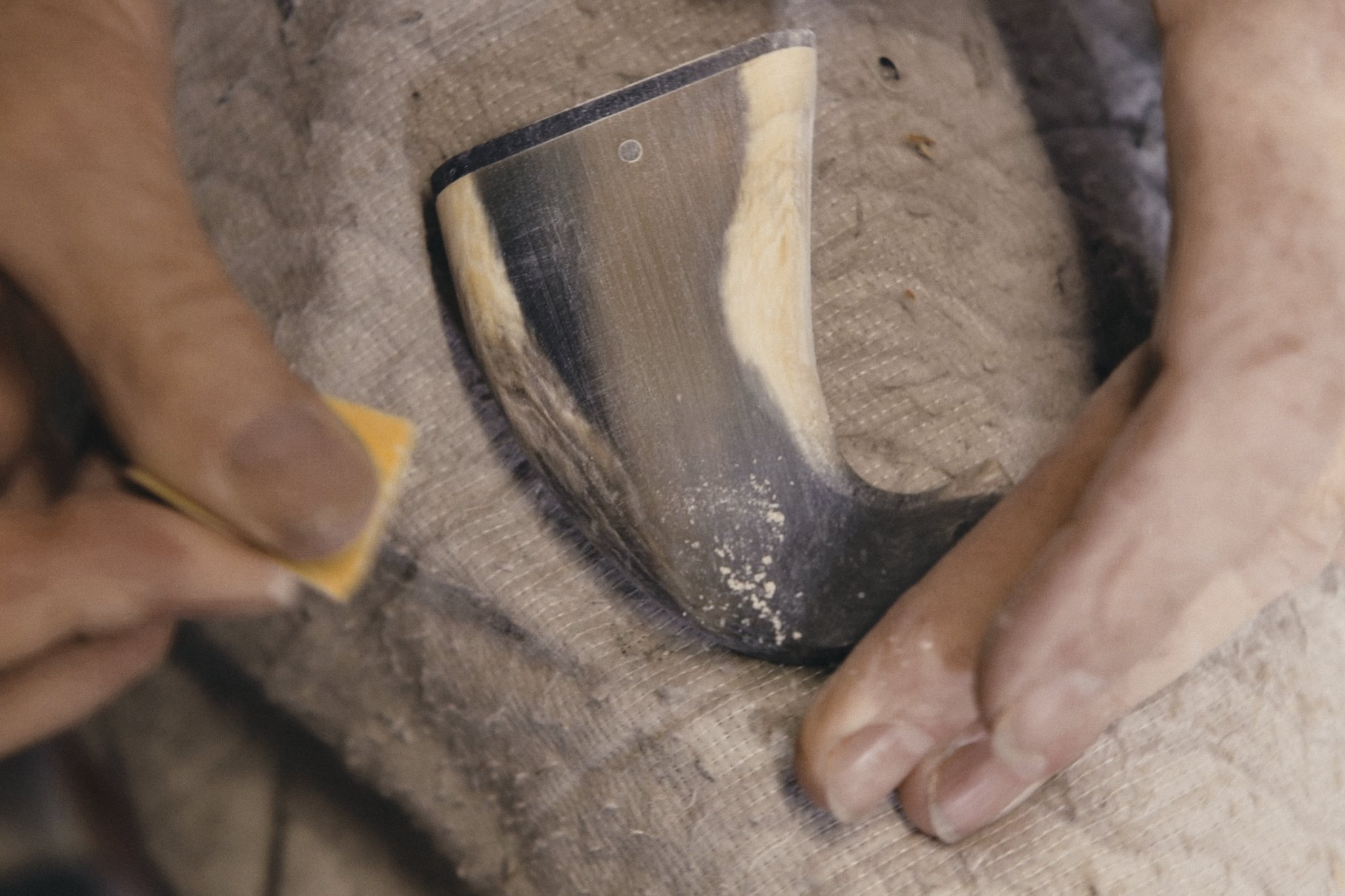

Basketmaking
Wicker weaving was very common among the rural population because it was an accessible and durable raw material. They wove containers, baskets, wagon baskets or baskets to carry on their backs used, for example, to transport fish. In the Kashubian region, where there was a lot of forest, plaiting from pine root was also popular. Plaiting is labour-intensive and requires care and patience. The tradition of plaiting has been passed down from generation to generation.
Regina Białk | braider
Folk artist from Kashubia specializing in ritual and decorative arts and plaiting. She has been working as an artist since 1998. She has gained experience by participating in numerous workshops, observing other artists and drawing on family tradition. She makes braidwork from pine and juniper root, and also specialises in glass painting and making paper flowers. She passes on her knowledge to the next generation by conducting classes in Ethnography Department or the Museum of the History of Polish Jews. During the ‘paper flowers’ workshop the same handicrafts are created as those which used to decorate traditional interiors, flowers used to make garlands, Easter palms and harvest wreaths. She is a member of the Association of Folk Artists and has won numerous awards.
Video and photo: Jan Rusek
Project coordination: Anna Ratajczak-Krajka
Production: Ethnography Collection of the National Museum in Gdańsk
Co-founded by the European Union




